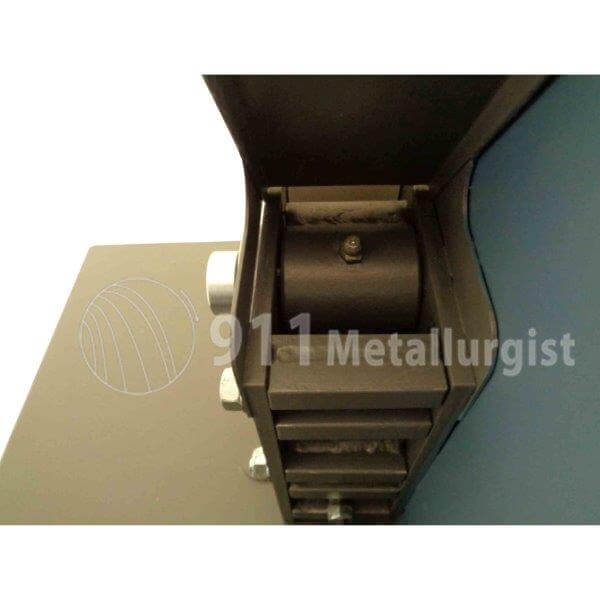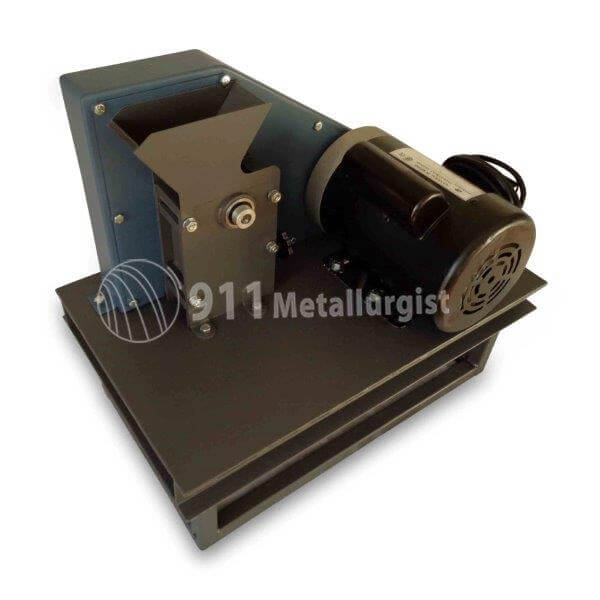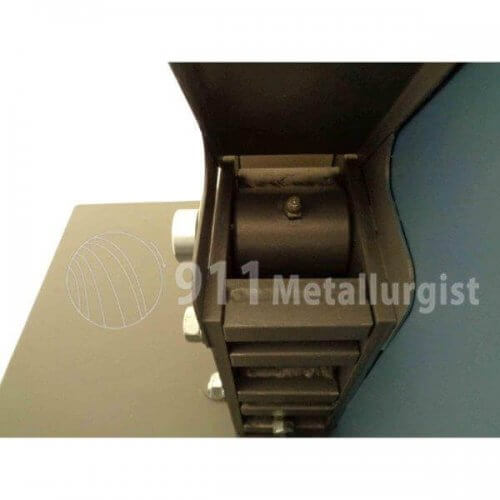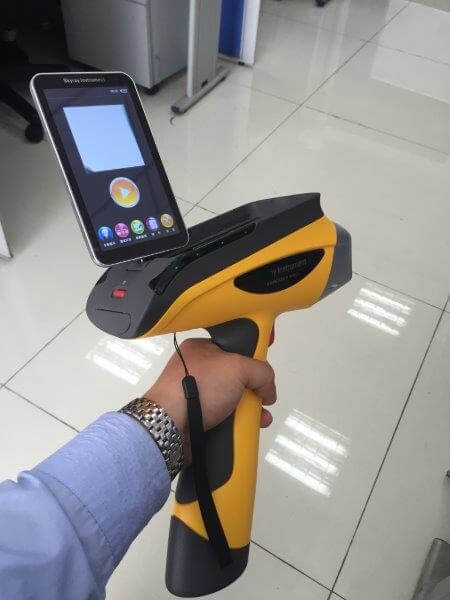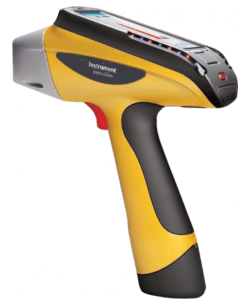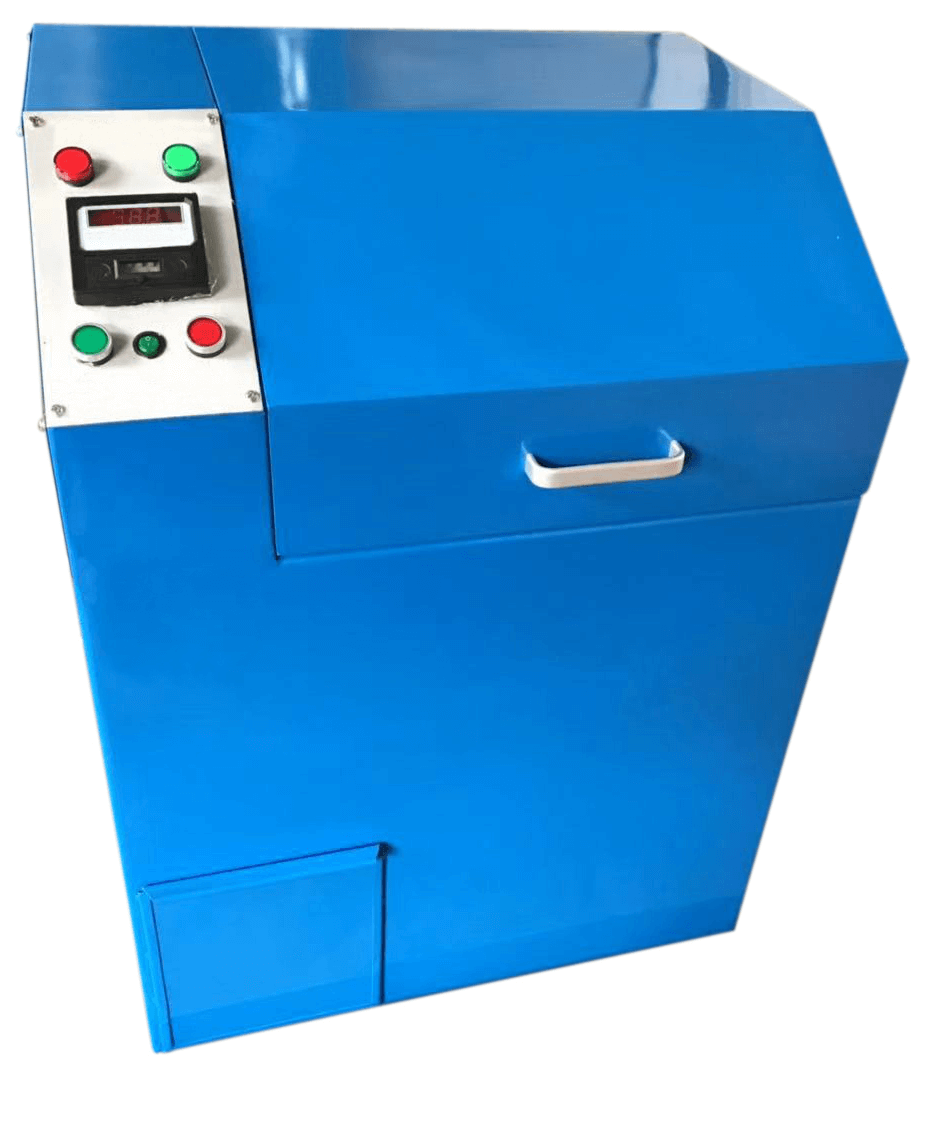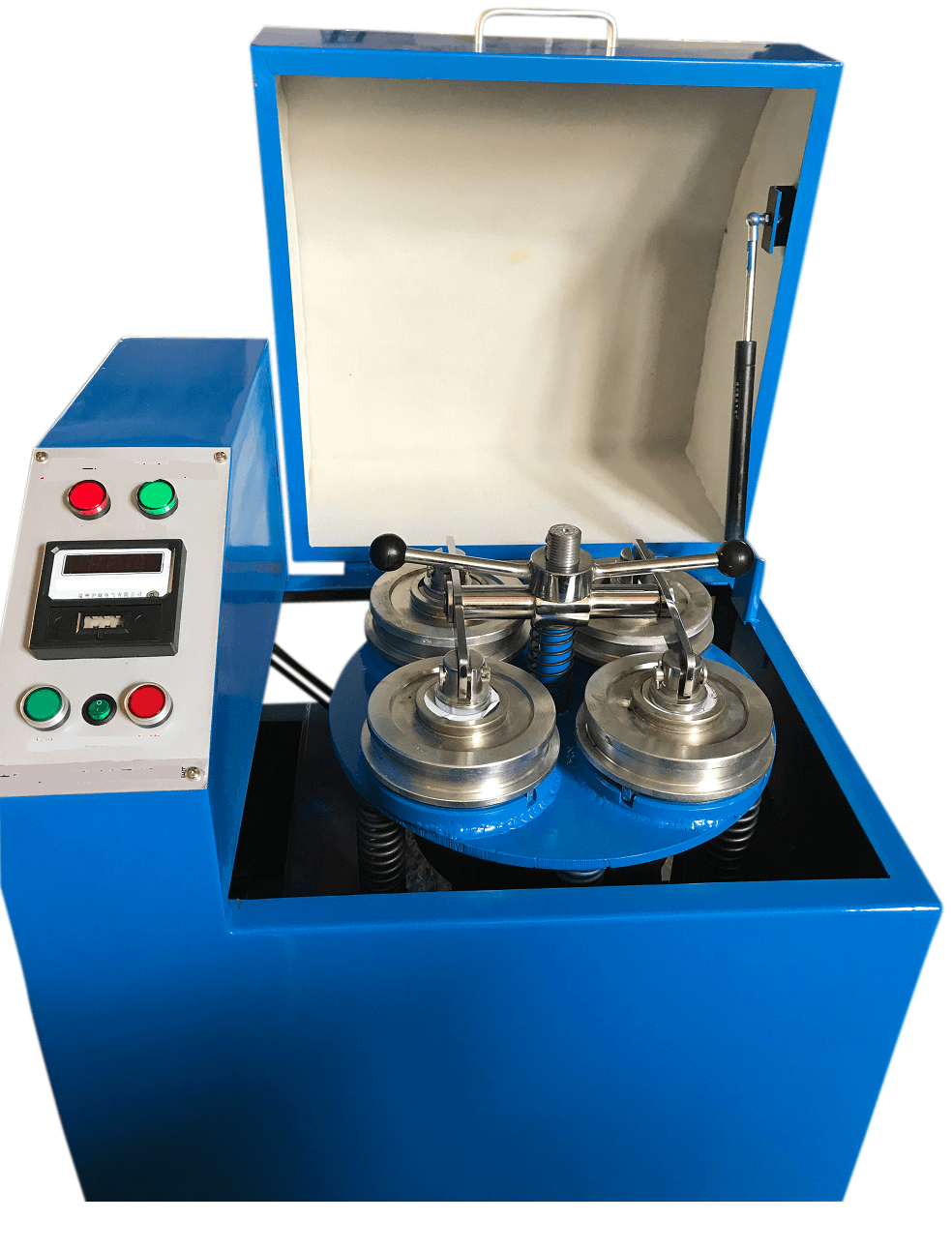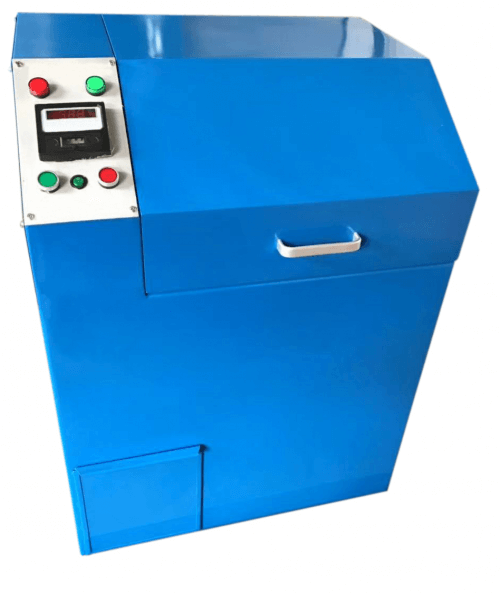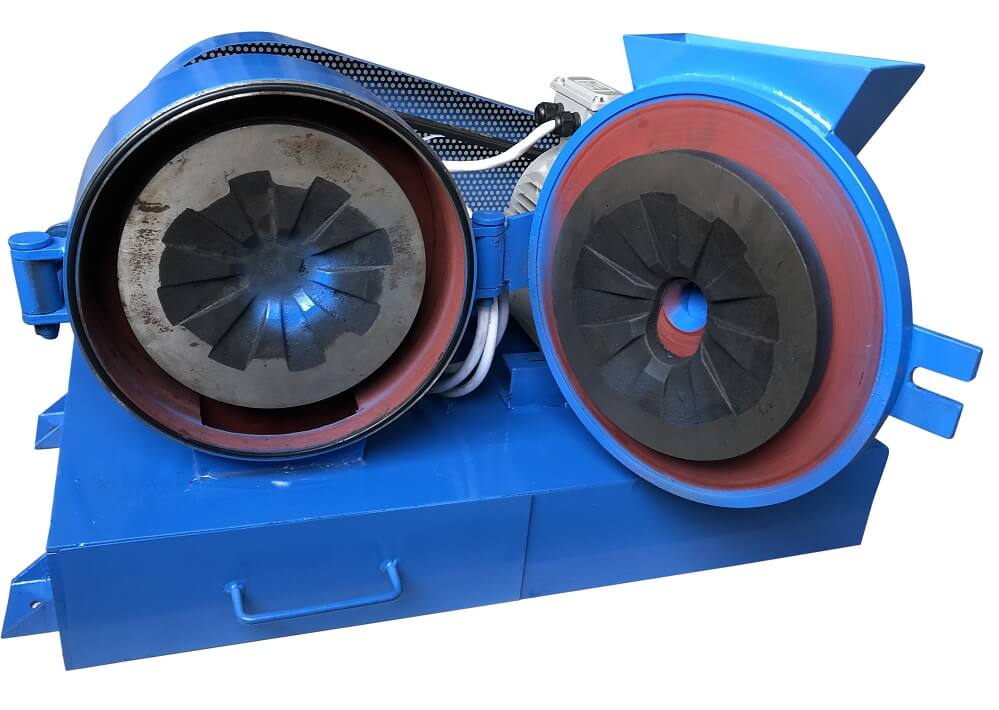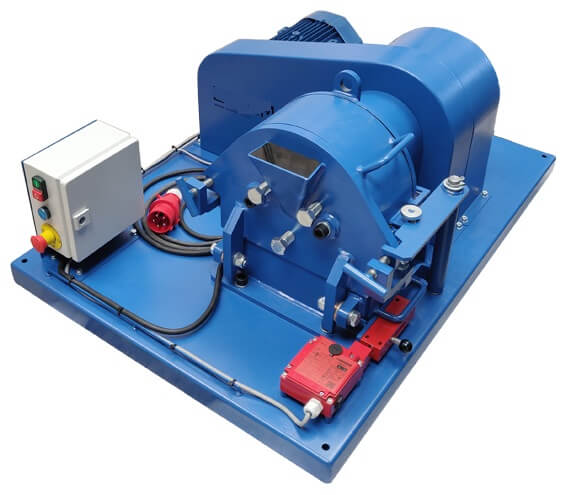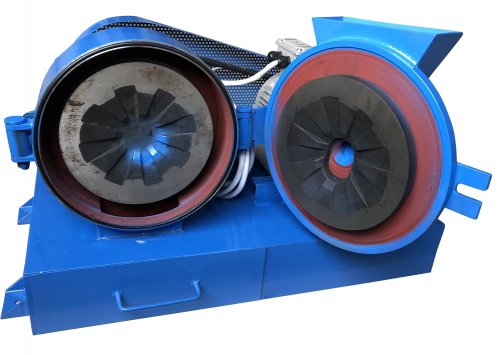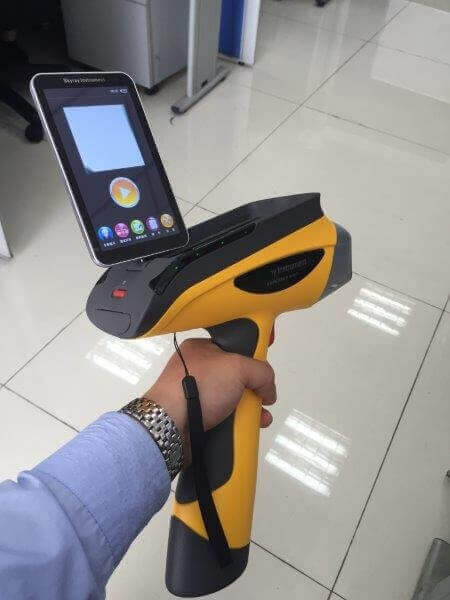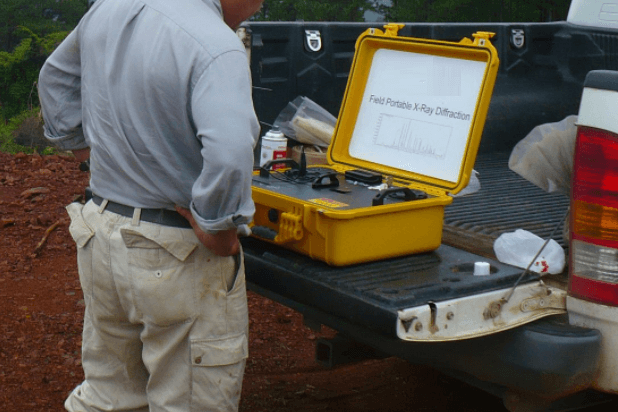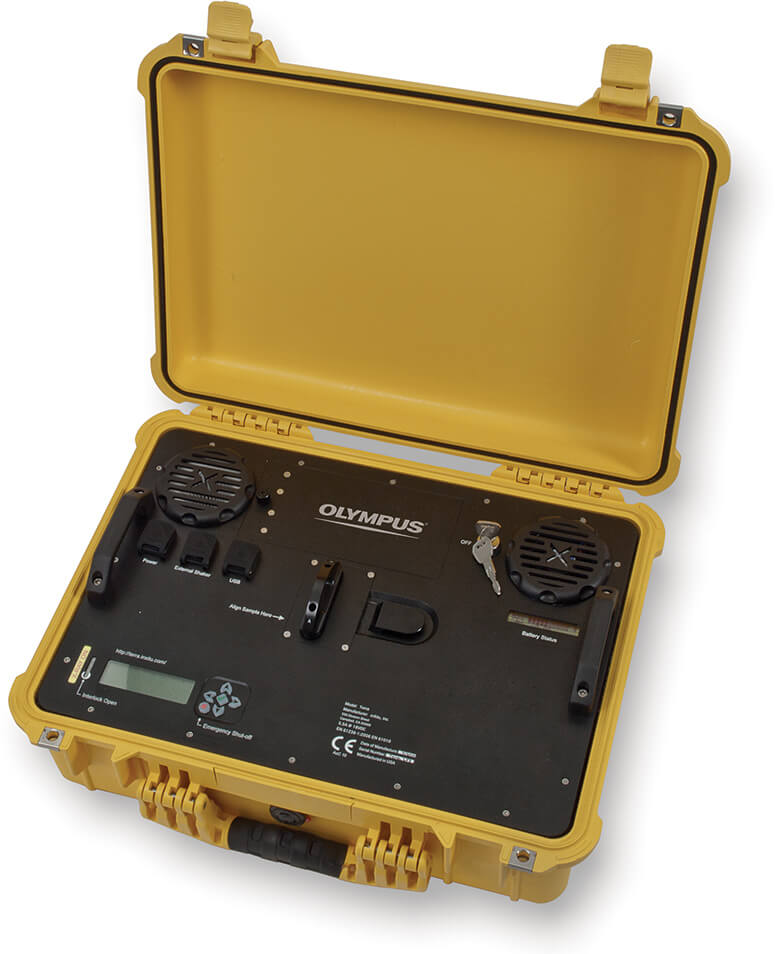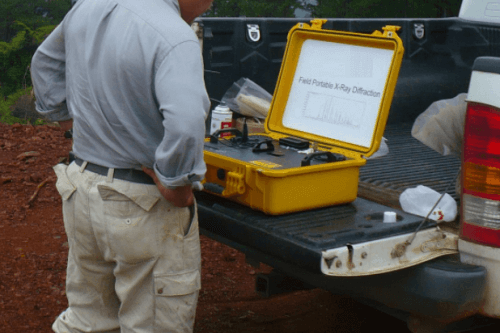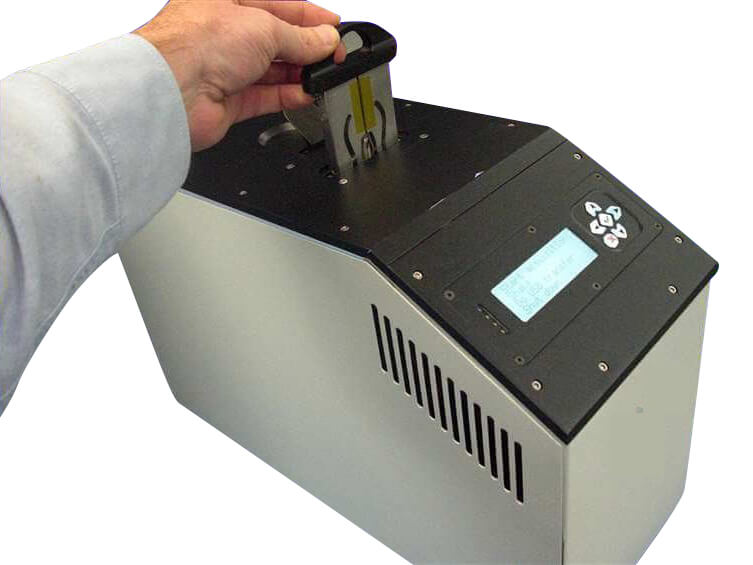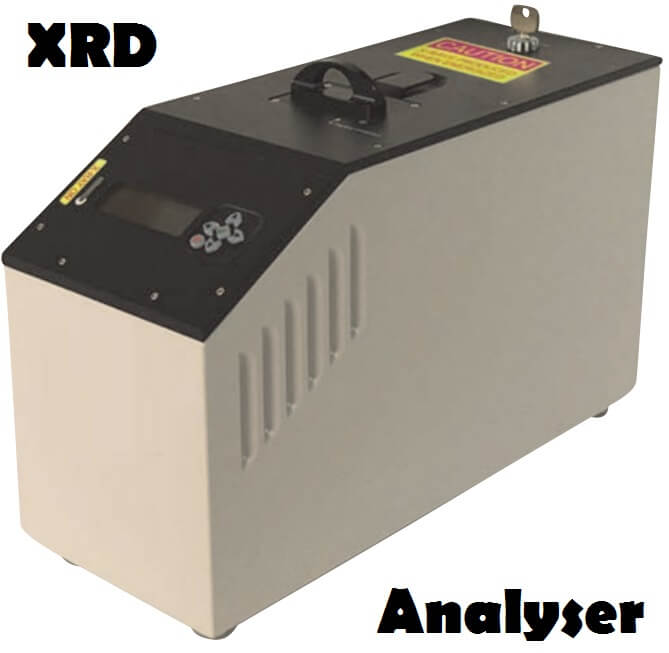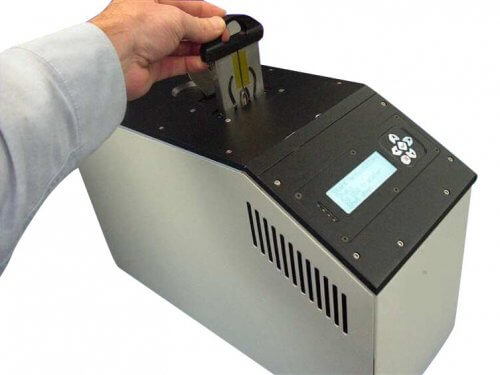Showing all 7 results
We’re going to do a quick intro to pXRF and pXRD principles and how they work. Then, we’re going to focus on pXRF, and work through the products, some of the suggested operating procedures, and then spend a bit of time looking at good references, case studies, and applications.
We’re have complete geoscience solution; we have diffraction, which can gives us quantitative minerology. So if we’re looking at this slide, on the top left we can actually derive the amount of minerals so they can quantify them. We have X-ray fluorescence, which is chemistry. We get very good, almost lab grade results if we’re doing the right job. And then, we also have the ability to look at structural properties of geo sites as well through microscopy, or optical minerology, or petrology, which is again, the backbone of what we learn at university when we’re looking at minerology. It’s the gold standard in a lot of ways.
Breaking it down to the products. And again, today we’re just going to focus on the portable products. This is our XRF products. Again, chemistry. We have the new VANTA Series handheld, which I’ll explain a little bit in the next section. We have the DELTA, which has been the workforce for a good six or seven years now. Many people are familiar with our DELTA Series handheld. And then, I’m just going to mention we have some portable bench-tops, some sort of customized smaller systems, as well as our process, and online, and sorting systems as well. If you’d like more information about the other products, feel free to get in contact with us after the webinar.
And then, looking at the diffraction systems, we have two offerings there. We have a portable system called a Terra, and a BTX II, which is a slow bench-top system.
And the one slide which I’ve got for microscopy is that we have a bunch of solutions from stereo microscopes to the polarizing microscopes and the metallurgical microscopes, which are all around optical mineralogy. Again, if you need more information, we can point you to the product managers and the specialists in the microscope business.
With XRF and XRD, as you would’ve read in the webinar intro, this talk is essentially targeting people who’ve got an existent background in the physics. So, I’ll keep it quite simple. But again, if you need more information about how the fundamentals work, we can provide you with that. X-ray fluorescence, we shot an X-ray on the sample, we use a technique called EDS, so it’s Energy Dispersive XRF, where we’re basically able to get characteristic X-ray back for each element. We measure them in a spectre, we quantify them, and that’s what we use to get a quantitative result for each element. Diffractions collect different. We’re basically getting the shinning and x-Ray on a sample, we’re looking at diffraction of the mineral layers within each compound. They’re all crystal structure. And we end with a diagnostic fingerprint for each mineral. And then, again, we can quantify that using processing techniques.
Many of you know the periodic table continues to give better coverage and better sensitivity. We’ve looked at this many times over the years. And essentially, what we’re looking at in the grain is elements that we can get down to low PPM levels. So with modern X-Ray tubes and with silicon drift detectors, we can now do a really good job across pretty much the whole periodic table. And especially the light elements. The new systems give us the ability to things like magnesium, aluminum, silicon, to labels that we’ve not been able to do before.
And if we start to look at the market now, we play work different parts of industry. We call it the “Mining Value Chain”. We start with geoscience research, with geological surveys, we then move to mineral exploration, where we’re developing around existing operations. We then move into the grade control area where we’ve got systems trying to make real-time decisions around materials and destination of materials. From there, we’re able to use that to form the processing division of the business around geometallurgy and aspects of decision-making on chemistry and minerology. And then, at the very backend of the business, we can also play a role in mine closure, and in the environmental business around looking at solar irradiation and contaminated land. There’s one separate business, which we have a nice sort of segue way into, which is around maintenance. A lot of our tools we use for NDT, and for Alloy, and PMI, and things like oil. And again, if you’d like more information on that, which I’m not going to cover today, we can point you in the right direction.
To dial it down a little bit, and to focus on XRF in particular – and this is where I’d like to just quickly talk about our new offering. In September, we’ve released our fifth generation handheld called VANTA. It’s a complete revolution in the industry. It’s ten plus years of, basically, building an instrument that’s been specifically designed for our market. And when I say that, the core pillars are around ruggedization. So we now have IP67 rating, dust and water proof, we have very high temperature ratings, up to 50 degrees C for geocycle. And one of the cool things that will detect a shadow, the mechanical eye lid that come down and protect the detector. We also revolutionary XRF technology, which is all about better accuracy, better precision, and higher cap rates, which means we can do more work faster, with higher accuracy and higher precision. And in the productivity space, we have a whole bunch of new cool stuff coming around cloud-enabled data processing, we have things like embedded GPS, new software – it’s a revolution in handheld XRF.
The products aside, where we’ve really established ourselves as, essentially, the industry leaders is… We all know that XRF can do a great job, but there’s a bunch of things that we need to do. And it’s very similar to what the lab has to do when they process our samples, it’s all around best practice. We put out a blog, and we had a week called Geoscience Week where we put out a guide called A Quickstart Guide for Best Practices in Portable XRF.
So, we look at the start. We need to start with designing an orientation survey. A lot of that is around standard operating procedure, chain of custody, QA/QC, all things that as geologists we’re very comfortable dealing with our normal lab regime. This paper that was published – and I was a co-publisher, it was a cornerstone paper, which goes to each one of these procedures, around each part of the procedure. Selecting a sample. Preparation – what do we want to look at around sample preparation? Data handling, data custody. And then, what do we actually want to do with the data when we’re finished.
And the next slide is all about selecting what sample. What are we working with? Are we working with bio-geochemical samples? Are we working with soils? Are we working around a drill rig where we’re taking precaution, or where we actually want to look at drill quill? So, we have to make a decision about the way we’re going to analyze that sample, and then move forward with the process.
And this slide encompasses a few of the really key aspects. Probably the main one, in the top right corner, is grainsize. And we know that if we have homogenous good materials, we’re going to get a good result. But if we’re analyzing course grain materials, we’re going to get very erratic and heterogeneous results. Similarly, if we’re running through bags, we’re going to get attenuation that’s obviously going to affect the calibration, it’s going to dilute our results. So we’re able to do that, but we need to make sure sap specific calibration is built up to take care of all of those things. And on the left, it’s an example of how to actually select the right type of soil to get out a sample. We’re looking at a soil horizon here, with different parts of the stratigraphy to leave different types of metal due to things like redox and chemical reactions going on in the ground itself. We’re actually able to use portable XRF to tell us what sample has the accumulation of metals, and which sample is going to get us the best results.
As the manufacturer, we do the best job we can to give you guys a robust calibration out of the box. We do have lots of different standards, and lots of different samples, but at the end of the day, you want to make sure that you’ll qualify an instrument, and you’re doing the right thing around looking at the performance of the XRF versus certified reference materials. There’s an example of a company, very well-known with research in Australia, who have very good standards that we can after. And this shows portable XRF versus them. It’s iron, in this particular case. And if we’re doing the right thing, we get the same result. So, it’s very encouraging.
And this is XRF instrument which you can go and buy off the shelf. There’s some pricing there. This is the packaging. You get a nice little portable XRF standards package you can take out into the field for any sampling regime.
The next step in the process that we’re really very comfortable and very used to doing, is coming on site, and developing site-specific standards. We’re working with site-specific standards because the final refinement, or the final tuning or tweaking – call it what you will – is actually tailoring the XRF to do the absolute perfect job for the type of rocks that you’re working with. And what we can see in the bottom left hand corner here is a set of 45 or 47 samples for a very low range metal. In this particular example, it’s copper and iron in an IOCG deposit. And we built a calibration, and basically, tweaked the calibration so we’d get a one to one rating and a 99% correlation to make sure that you’re very confident that the analyzer is doing the right job.
As I mentioned earlier, one of the critical points with portable XRF is around sample presentation. And again, we have a whole lot of solutions and a whole lot of expertise around providing that guidance, and providing recommendations on what sort of tools and equipment we can use in the field. Again, if you’d like more information, we can certainly point you into the right direction with some of these companies, whether it’d be drilling a hole in a sample, or taking a sample right through lead-based, you know, a ring mill or a jewel crusher to get 95% of your sample passing 75 micron. The more that we get towards that, the better results we can achieve in the field.
And if we just want to spend a few seconds focusing just of field-based sampling solutions, there’s some fairly well-known bits of equipment out there which you can go and purchase, including this rock grinder for sample either across a wall or a phase underground, or there’s this small hammer mill up on the right hand side, which we can use for crushing things like RC chips or soil that’s not quite homogenous enough in the field. And you can take these out in the field, run them off 12 volt system off a car. And you can quite easily obtain lab grade results in the field.
And then, more of the “Complete Solution” level. We have a company that we work in tandem with around creating and developing a full solution. And that’s crushing and grinding. We have a sample press. A sample press enables to create a puck without a consumable, it doesn’t require a window, which means that you’re getting a lot better XRF performance without having attenuation. They also have systems, which flows in the laboratory. It’s a laboratory information management system, which manages the chain of custody, the standards, it merges the real-time QA/QC actually while you’re running the sample. So, it gives you confidence that you’re getting good results whilst you’re actually running the samples.
And a key part of what we’re dealing with is how do we deliver our data in real-time. And anybody who uses the portable XRF knows that we can generate a lot of data very, very quickly. We’ve got spreadsheets of multi-element data arriving all over the place. I quite often see people with laptops where they’ve got 20 or 30 spreadsheets altogether on the one page, and it gets quite difficult. But having solutions, like this one I’ve got up on the screen, the data can arrive into a real-time web portal, it can be QA/QC validated, it can be managed remotely, and then we can get an output, which is designed to be doing exactly what the client would like to see. Roll out of bed in the morning before they go and see the drill rig, and they can see the data on their iPhone, and say, ‘Oh, look, we’re drilled through the contact, now we need to stop the drill’, and make that decision, save lots of money, and then move the drills to the next site. It’s all about real-time decision-making.
And then, once we have all that data, it’s what do we do with it. And as geologists, we generally pass that into a 3D model, we use that 3D model for a lot of things, we use it for mine design, we use it for vectoring towards mineralization, we’re targeting where we’re going to drill next. And we have tools, where we have our portable XRF data arrive into a classification system, as in the right hand corner there. The rocks get classified, and then passed straight into a 3D model. So it’s all about expediting the chain of custody of the data that usually can take months, even up to half a year to get this data into a model and start working with it.
And then, the one small part I’m going to talk about a little bit is about how we take that data, and how do we report that data to the market. And again, it’s been quite controversial in the past, myself and a few others involved around pXRF technologies spent some time with this and said, ‘Well, let’s include some of these sampling techniques, some of the recommended procedures when people want to report the data so they can go to table one, we can get some information, and we can get some recommendations on what we need to do to report it.’ Again, for those who’d like more information, we’ve got lots of good examples with companies who do this the right way, and what you should be looking at to put out in the market.
One of the very well-known industry initiatives that happened a couple of years ago, up here, in Canada, ran by a very well-known geochemist, where we had a bunch of industry companies who sponsored, and we worked through the quality control and assessment of portable XRF. It was all about bench marking. What can XRF do? How can we develop standard operating procedures on variable media? And how can we recommend the best use? Again, that’s a great reference, it’s about 500 pages of reports and data there. And you can go to the – it’s actually on the Association of Applied Geochemists website – and download the report. It’s a great reference.
And as part of that work, an editor of Geo Magazine, we put together a thematic set. So, two complete issues of Geo which were completely dedicated to portable XRF. And that was where companies and institutions submitted papers on best practices and what they’ve done. So, it’s a great reference out there for those who are looking for papers and for direction on where to head.
An example in Finland, was put together in a special report, which has a whole chapter on portable XRF. And for this particular example, it was looking at Geo chemistry, and how they’re effectively using portable XRF to do that. And in light of that, and actually many years ago, about 15 years ago – this is an example of geological survey of Canada – with using a similar technique, they’re using litho-geochemistry, so using the chemistry to tell us what part of the stratigraphy and what rock types are in. And what we’re looking at here, on this downhole plot is the blue data is ICP – that’s lab data – and the red data is XRF, and we’re getting very agreeable results between the two datasets. And from there, they’re able to work out the rock type, determine the stratigraphy, and basically, adapt and design their drill program in real-time.
Moving forward, an organization that we’ve worked with a lot in Australia, kind of the coalface and the cutting edge of pXRF technology is that we know the data is very, very good. And when we look at these plots, we can see extremely good agreement between elements. In geoscience, we use certain elements to tell us certain things. We use arsenic as a very string proxy for gold mineralization, we use things like titanium, zirconium, and chrome. They are mobile to mobile element ratios to tell us what are rock types are. And if take that dotted board, we’re actually able to use that to start to predict and work out what rock types are, and take the subjectivity and some of the fuzziness out of logging rocks. And what we’re looking at here, it’s an advanced algorithm – it’s actually called wavelet tessellation – where we’re using iron through a project that was developed through a group which was a large research initiative in Australia. And we can use iron through a wave of tessellation to, basically, break out the rocks and start to break it down into different scales of features that we’re seeing, you know, first order versus second order versus third order features, and to help that and assist us in breaking up the rock types, which may not be visually obvious for people to pick out in the field.
Moving from the R&D and the geo survey applications, it’s the first place that we tested XRF and our businesses, generally around soil sampling. So soil sampling works very, very well if fine-grained samples are able to move about on the surface of the earth. And that geochemistry very, very rapidly. And in this particular example, we managed to cover this area, and basically, build up a real-time geochemical map very rapidly. From there, we could move around, we could decide where were we going to go next, and we can use that as a decision-making tool on how we’re going to change our sample program on the site. One of the really cool things about having assay data right from the field is that you don’t just get one element. In the last example we were just saying copper, but now, in this particular example, which is the same dataset, we can see every element side by side. So we have copper, lead, zinc, and we get to see the way the different metals are moving around in the system, and we can see what’s mobile and what’s not. We can see contamination overprint. For working in an area around the mine, we can see where there’s sulfur and sulphides that have been delivered around roads and things like that.
And if we start to talk about the return on investment, and what we ca actually get out of portable XRF, well, the value proposition, the current example I have up on the screen was one of the users in Australia, and it shows what can be achieved with one month with one instrument. And in this particular example, they were able to go out and do very detailed, very fine geochemical sampling over a known area of mineralization – it’s South Australia, around the Burra Copper deposits, which is one of the biggest copper deposits in the world – and delineate exactly where they were going to go and drill next. And again, this is several years ago as the technology was emerging. It got the company into the place that they needed to to make those decisions.
As we go further down the value chain, once we have an anomaly, once we have a target, the first thing we’re going to do is start drilling it. And some of the early drill procedures we might use XRF. In this particular example, we’re using auger drilling in West Africa. We can see the samples are being brought into a bench-top system. We’ve got a small little XRF added in the hood. The samples are being run in a very good chain of custody with great validation. And then, we’re using that data to classify the rock types, because in that area we can’t actually tell what the geology is. We’re in an area of residual surface. In this example, we can actually map out the grainstone built amongst the sediments, and then we know where to go and target, because we’re looking for orogenic gold. So it’s a very, very powerful tool for delimitating the stratigraphy through what would usually be very difficult to look at.
And sticking on the gold theme, the next example I have up on the screen gives us an example of what the geochemical signatures and what the common pathfinders are that we’re going to use for going out and looking for gold. And one of the things that I’ll state up front – and we have for many years – is that portable XRF is not very good for gold, but there’s a whole host of elements which we can use to go and look for gold, which we call pathfinders. And in this example, at the top here, we can see one of those elements, with ICP versus the same element with portable XRF. And we’re getting exactly the same map, which means that we’re very confident that portable XRF is doing the same job.
A little bit of a gold theme here. And that’s because the gold business, to us, has been a very effective place where we’ve, obviously, put a lot of instruments into. And it’s also an application, we’ve developed a lot of tools and techniques. This particular paper which I have now on the screen was an example several years ago. A fellow who put together a program at Plutonic Gold Mine to, basically, define stratigraphy and use it for geometallurgical work, which we’re going to have a look in a couple of slides on the next page.
He was able to, basically, reconstruct the stratigraphic model around Plutonic. Basically, it’s a sequence of bath salts where the bath salts flow in the basis, so in-between flows the gold deposits along those surfaces and substrates, which in the top corner, the red circles, we’re looking at chrome versus gold. So, as we step down the stratigraphy, the gold accumulates on the stratigraphic boundaries. Now, when they’re able to do 3D surfaces of that, where they can actually model that, and then use that as a tool for vectoring and for modeling where they think the next gold occurrence is going to be, or look for extensions of the orebody. He was also able to take that data and domain it out in a deposit that’s quite difficult. It’s a refractory gold deposit, it’s got high arsenic, it’s got free milling gold versus refractory gold. Essentially, as the arsenic grade goes up, the recovery drops. So what they were able to do was blend and change the process and technologies so they could optimize recovery based on the material that was being delivered to the mill. And again, it’s an excellent example of having a dataset which they didn’t have the past to drive better recoveries, and to get better results in the mill.
The other cool things we’ve added in the last few years is the camera and collimator feature. And what they give you the ability to do is actually use the XRF with a focusing mechanism. So, with using the camera, we can collimate down so we can change the size of the zoom to look at a bit smaller things. We can actually use that microstructural assessment. We’re looking at grain particular or phase particular work. We have some gold grains in those particular examples, which would be quite difficult to observe by the eye, but with an XRF and a camera, we can do a great job.
Moving on to grade control now, we have an example here of iron ore in Australia where our neo systems have the ability to take something that amounts to a 90-second test, and do it within 15 seconds. So what we’ve got here is iron, essentially in 90 seconds versus 15 seconds, and against Silicon. This is an example where a lot of elements perform extremely well. And it’s hard to believe – even for myself – that we can deliver such good data in such rapid time, which means that you can put a lot of samples through that you may not have been able before, and you can make decisions much faster than you’ve ever been able to before.
On the second slide, we’re looking at aluminum and phosphorus. In looking at the deleterious settlements in iron ores. So the last example I have here, it’s a very hot topic at the moment, the whole lithium factories business is, obviously, very energized at the moment – pardon my pun. And it’s technique where we can actually use portable XRF and XRD together. Because if we’re looking for lithium, there’s a bunch of very cool elements in the periodic table, one being rubidium. It fractions into lithium within the same sort of ratios that we see in lithium. And the other thing that we need to do is look at the minerology. So, we might have a lithium deposit, but it doesn’t necessarily mean we can mine it. The XRD is a fantastic tool. We’re looking at what phase is it in, we’re looking at if it’s spodumene, or if it’s petalite.
You mentioned portable XRF doesn’t work well for gold, but you can use pathfinders.
Which element would you use to look for gold?
It’s been one of the applications we’ve had a lot of success with. And for those geologists that have worked particularly in various gold deposits, it’s the hydrothermal fluids, I mean particularly orogenic and epithermal or high solvation systems. They generally have different elements that come along with them. Arsenic is probably the silver bullet. We get very strong association in some orebodies – obviously, not all – where we can use arsenic in a ratio to give us a ballpark – relatively, not always absolute – of the gold grade. We have many examples, and many published examples that show how well that can work.
What is X-ray fluorescence and what is XRF?
XRF is X-ray fluorescence; that’s what it stands for and it’s a method to get fast, non-destructive elemental information about the sample that you have in front of the analyzer.
What type of samples or applications would you be using XRF?
The most common application is for scrap sorting. A scrap dealer gets more money if he knows that his stuff is all the same thing. So when they go to melt it off, they can make new stuff out of that. So, that’s really what we do as we say okay, it’s this grade of metal or that particular grade of metal. And they can sort it into light piles and sell it for more money, and so that’s where the value gets added, by knowing what you have.
What other type of applications is XRF being used for?
There’s some other metal applications which are for positive material identification which are in oil refineries. You need to know that the pipes that you install there are what they’re supposed to be, so they don’t corrode too fast and leak and create a health hazard. But there’s a lot more than just metals – it can go on to soils for mining or for environmental, if you’re looking at like lead in soil and a number of other things like that. There’s consumer products looking to make sure about lead in toys, it’s even used in archaeometry to look at what paintings are made of, because it’s non-destructive you can use it on pretty much anything.
Do you have to be highly trained to understand how to use this equipment?
No, all the difficult mathematics and all that stuff goes on kind of behind the scenes, so we’ve made it pretty straightforward to use. With a quick safety training in most regions of the world you can be up and running in a couple of minutes.
Are there any other alternatives to XRF?
XRF has kind of a unique space in that it gives you quick answers out in the field because you can take the portable instruments out to your sample. And there are a bunch of laboratory techniques that can be a lot more precise, but those usually involve bringing the sample back to the lab, they require like a lot of digestion and work and sample preparation in the lab, and they also destroy a little bit of the sample. So they have some limitations.
Some people would send things into a lab, you’re doing this more on location.
How long does it take to do a sample?
That really depends on what kind of answer you want to get. For a lot of the scrap sorting, we can get an answer in a second or two in terms of what type of metal it is. Some of the metals are more challenging, it might take 15-20 seconds. In the mining kind of space, they’re looking for usually some very detailed information and the test can take a minute or two. But it’s again relatively quick compared to the hours of digestion you might have to do in the lab or when you send it off to a lab out, waiting for them to get to it. If you expedite it and pay the extra fees, cause you’ve got that much time in transit time alone sending it off to a lab. So the immediacy of XRF is really one of the big selling points for it.
How does X-ray Fluorescence Work
All XRF instruments are designed around two major components: a X-ray source, commonly an X-ray tube and a detector. Primary X-rays are generated by the source and directed at the sample surface sometimes passing through a filter to modify the X-ray beam.
When the beam hits the atoms in the sample, they react by generating secondary X-rays that are collected and processed by a detector. Now, let’s look at what happens to the atoms in the sample during the analysis. A stable atom is made out of a nucleus and electrons orbiting it. The electrons are arranged in energy levels or shells, and different energy levels can hold different numbers of electrons.
When the high energy primary X-ray collides with an atom, it disturbs its equilibrium. An electron is ejected from a low-energy level and a vacancy is created, making the atom instable. To restore stability, an electron from a higher energy level falls into this vacancy. The excess energy released as the electron moves between the two levels is emitted in the form of a secondary X-ray. The energy of the emitted X-ray is characteristic of the element.
This means that XRF provides qualitative information about the sample measured. However, XRF is also a quantitative technique. The X-rays emitted by the atoms in the sample are collected by a detector and processed in the analyzer to generate a spectrum, showing the X-rays intensity peaks versus their energy. As we have seen, the peak energy identifies the element. Its peak area or intensity gives an indication of its amount in the sample.
The analyzer then uses this information to calculate a sample’s elemental composition. The whole process from pressing the Start button or trigger, to getting the analysis results can be as quick as two seconds, or it can take several minutes.
Compared to other analytical techniques, XRF has many advantages. It’s fast, it measures a wide range of elements and concentrations in many different types of materials, it’s non-destructive and requires no or very little sample preparation and it’s very low-cost compared to other techniques. That’s why so many people around the world are using XRF on a daily basis to analyze materials. If you want to find out more about our range of XRF analyzers, please visit our website.
PORTABLE GOLD XRF ANALYZER
If you need to know the composition of jewelry and precious metals, you need our Gold XRF Gun.
Gold, silver, platinum and their alloys, the gold XRF analyzer can measure them all. The gold analyzer quickly and accurately determines the karatage of gold items, the purity of silver items and any other metals that are in the piece. The gold analyzer was designed with the jewelry industry in mind. Its small footprint won’t take up valuable counter space and it can test any piece of jewelry in seconds.
Testing couldn’t be easier. Just place, close and tap. The gold XRF analyzer is safe for any user. It can only test samples when the lid is shut, and the flashing light on the top lets you know when the test is actually taking place. Compact, accurate, fast.
Gold XRF testing is completely nondestructive. The sample is not affected or harmed in any way. The gold analyzer’s viewing window and well-lit chamber allows both operator and customer to see the sample as it is being analyzed.
Karat Mode or the more comprehensive Chemistry Analysis Mode can be selected. The gold analyzer uses X-ray fluorescence, a nondestructive and fast analytical method to test samples. It’s easy to use and adapts to nearly any sample size or shape. An integrated camera allows the gold analyzer to focus on and get results from individual components. This is useful when testing pieces that include gemstones.
The gold XRF analyzer offers the convenience of portability as well. An optional battery pack allows testing on the go. The gold analyzer weight only 22 pounds, about 10kg and combined with its custom carrying case can go anywhere you need it to.
Whether you are a jewelry shop owner, a refiner or a pawnbroker, the gold XRF analyzer will give you accurate results in just seconds. It’s the ideal solution for your testing needs.

